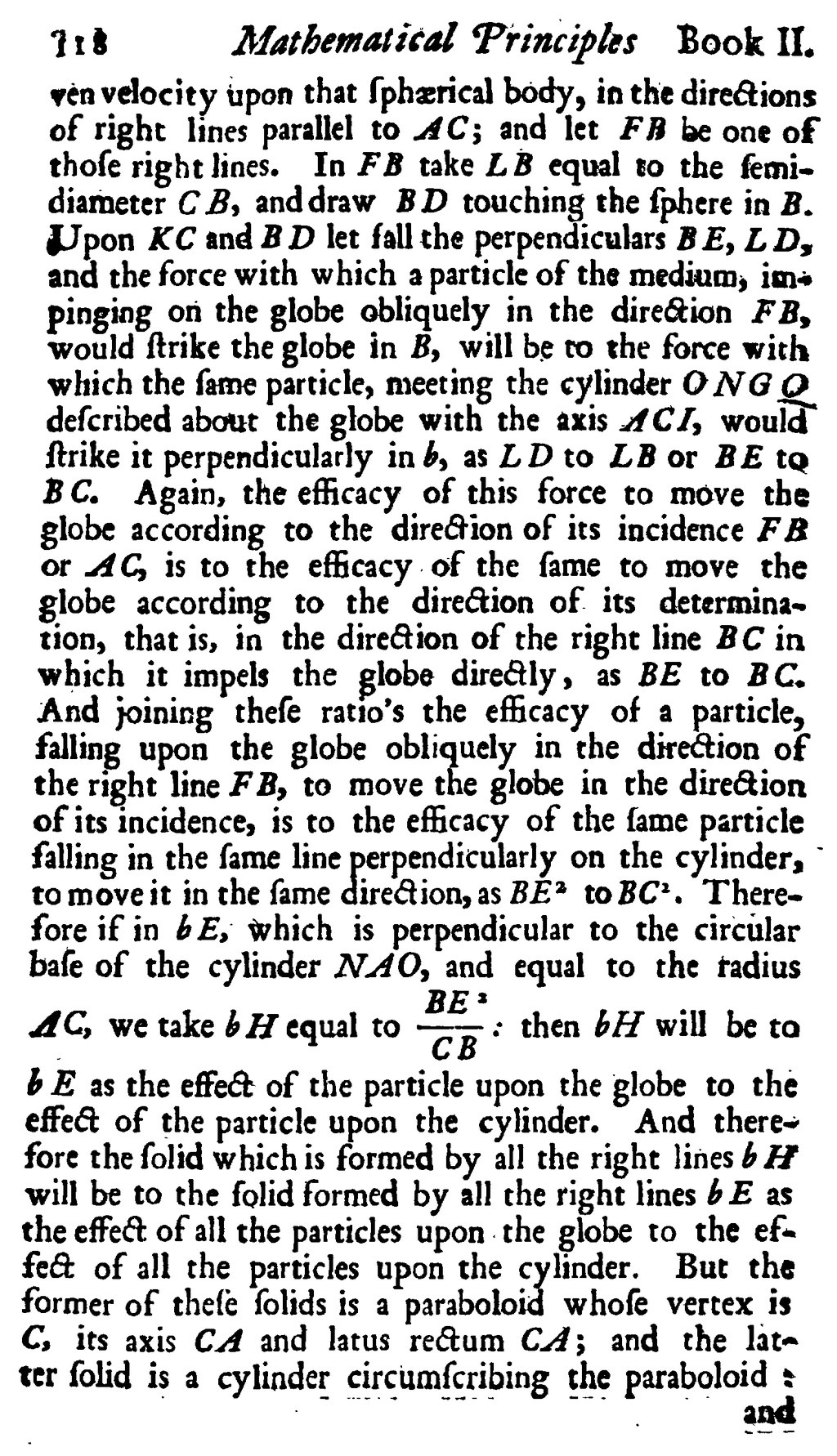ven velocity upon that ſphærical body, in the directions of right lines parallel to AC; and let FB be one of thoſe right lines. In FB take LB equal to the ſemi-diameter CB, and draw BD touching the ſphere in B. Upon KC and BD let fall the perpendiculars BE, LD, and the force with which a particle of the medium, impinging on the globe obliquely in the direction FB, would ſtrike the globe in B, will be to the force with which the ſame particle, meeting the cylinder ONGQ deſcribed about the globe with the axis ACI, would ſtrike it perpendicularly in b, as LD to LB or BE to BC. Again, the efficacy of this force to move the globe according to the direction of its incidence FB or AC, is to the efficacy of the ſame to move the globe according to the direction of its determination, that is, in the direction of the right line BC in which it impels the globe directly, as BE to BC. And joining theſe ratio's the efficacy of a particle, falling upon the globe obliquely in the direction of the right line FB, to move ſhe globe in the direction of its incidence, is to the efficacy of the ſame particle falling in the ſame line perpendicularly on the cylinder, to move it in the ſame direction, as to . Therefore if in bE; which is perpendicular to the circular baſe of the cylinder NAO, and equal to the radius AC, we take bH equal to then bH will be to bE as the effect of the particle upon the globe to the effect of the particle upon the cylinder. And therefore the ſolid which is formed by all the right lines bH will be to the ſolid formed by all the right lines bE as the effect of all the particles upon the globe to the effect of all the particles upon the cylinder. But the former of theſe ſolids is a paraboloid whoſe vertex is C, its axi CA and latus rectum CA; and the latter ſolid is a cylinder circumſcribing the paraboloid



